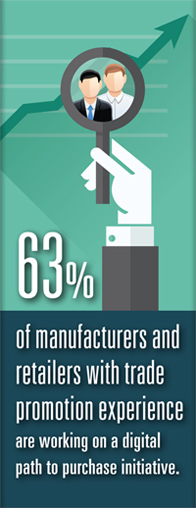Market for Growth
Test and learn. Listen and adapt. Sense and respond. These characteristics are important to a growth strategy; however, they are quite different from what we see in traditional marketing. In more conventional marketing programs, where marketing operates as a functional silo, companies yell their message. It is about marketing for the sake of marketing. They get good at it. But, they are not good at testing, listening or sensing. Instead, the marketing engines are well honed to produce and market campaigns. The focus is on output, but the ability to measure marketing-effectiveness takes months. I think that it is time to drive a change. Marketing should be about growth. With the rise of retail house brands, and the proliferation of products, traditional marketing programs become less effective. As companies start to define customer-centric marketing programs, three shifts are critical:
1 Rise of E-Commerce. As growth slows, e-commerce channels beckon, but consumer goods companies are not used to selling directly to customers. In this evolution, test and learn strategies become more important. With the growth of e-commerce, point-of-sale (POS) data mining and sentiment patterns fuse to sense and drive a more intelligent response. The evolution of cognitive learning to sense, act and learn through new forms of analytics will make this easy. Since e-commerce happens in minutes and hours, with new forms of analytics, these insights can be applied to conventional channels that operate in weeks or in months. In addition, since e-commerce enables the endless aisle, the selling of products enables the management of the long tail of the supply chain for product personalization of unique product opportunities.
 2 Tailored Assortment. One thing is clear: To grow, companies can no longer broad-brush markets. Instead, there needs to be a store-specific strategy to build the store of the community. Downstream data is the foundational underpinning to fuel new forms of analytics to drive these customer-centric programs. As a result, look for shopper marketing and assortment planning to change in the next five years.
2 Tailored Assortment. One thing is clear: To grow, companies can no longer broad-brush markets. Instead, there needs to be a store-specific strategy to build the store of the community. Downstream data is the foundational underpinning to fuel new forms of analytics to drive these customer-centric programs. As a result, look for shopper marketing and assortment planning to change in the next five years.
3 Digital Path to Purchase. The power has shifted to the consumer. The goal is to drive excitement at the consumer’s house when the shopping list is created, in the store with the decision to put the products into the basket, and at the time of purchase. To capture the hearts and minds of today’s consumers, marketing programs need to focus on the individual. Underlying these programs is daily data shared daily on customer buying patterns.
Marketing programs need to change. The opportunity is to execute test and learn strategies and to get good at listening. These technologies are termed sentiment analysis. The marketing plans need to be more agile and data-driven, and the processes for test and learn need to be very fluid. They are not today. This is the opportunity.
1 Rise of E-Commerce. As growth slows, e-commerce channels beckon, but consumer goods companies are not used to selling directly to customers. In this evolution, test and learn strategies become more important. With the growth of e-commerce, point-of-sale (POS) data mining and sentiment patterns fuse to sense and drive a more intelligent response. The evolution of cognitive learning to sense, act and learn through new forms of analytics will make this easy. Since e-commerce happens in minutes and hours, with new forms of analytics, these insights can be applied to conventional channels that operate in weeks or in months. In addition, since e-commerce enables the endless aisle, the selling of products enables the management of the long tail of the supply chain for product personalization of unique product opportunities.
 2 Tailored Assortment. One thing is clear: To grow, companies can no longer broad-brush markets. Instead, there needs to be a store-specific strategy to build the store of the community. Downstream data is the foundational underpinning to fuel new forms of analytics to drive these customer-centric programs. As a result, look for shopper marketing and assortment planning to change in the next five years.
2 Tailored Assortment. One thing is clear: To grow, companies can no longer broad-brush markets. Instead, there needs to be a store-specific strategy to build the store of the community. Downstream data is the foundational underpinning to fuel new forms of analytics to drive these customer-centric programs. As a result, look for shopper marketing and assortment planning to change in the next five years.3 Digital Path to Purchase. The power has shifted to the consumer. The goal is to drive excitement at the consumer’s house when the shopping list is created, in the store with the decision to put the products into the basket, and at the time of purchase. To capture the hearts and minds of today’s consumers, marketing programs need to focus on the individual. Underlying these programs is daily data shared daily on customer buying patterns.
Marketing programs need to change. The opportunity is to execute test and learn strategies and to get good at listening. These technologies are termed sentiment analysis. The marketing plans need to be more agile and data-driven, and the processes for test and learn need to be very fluid. They are not today. This is the opportunity.

